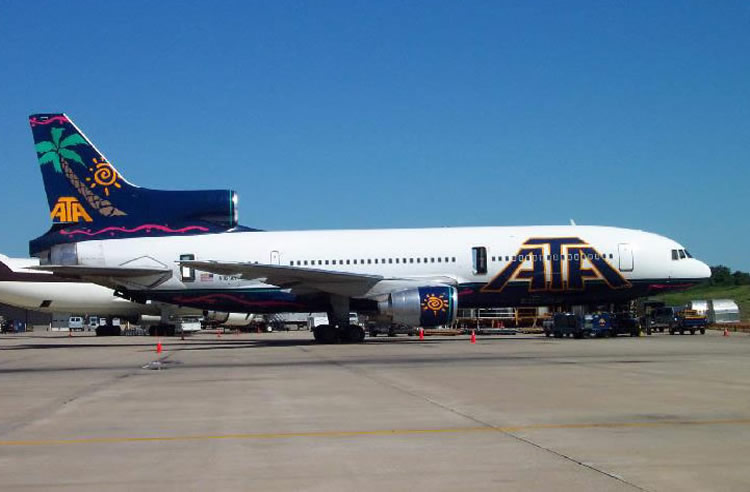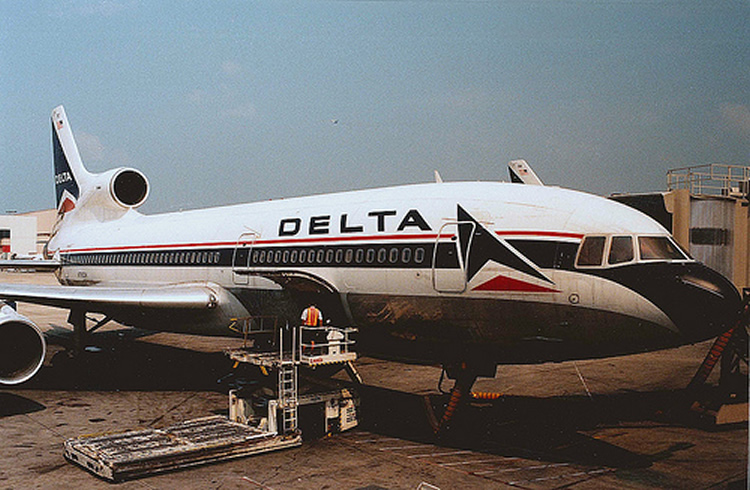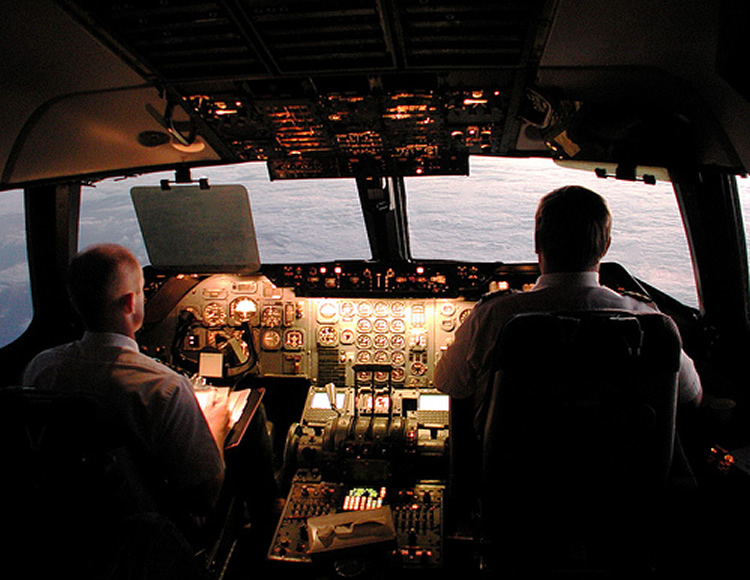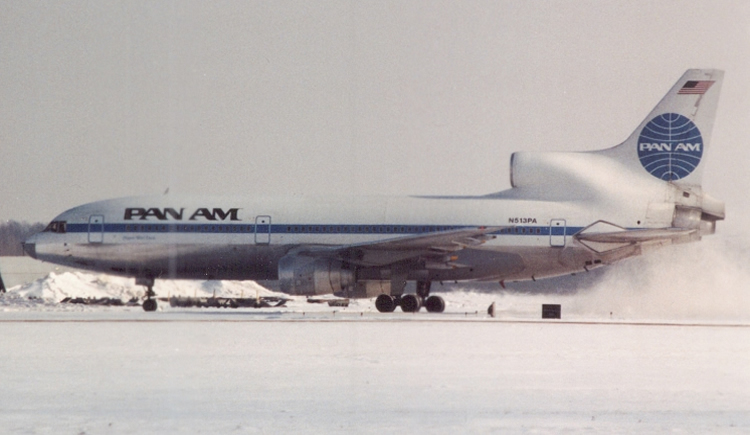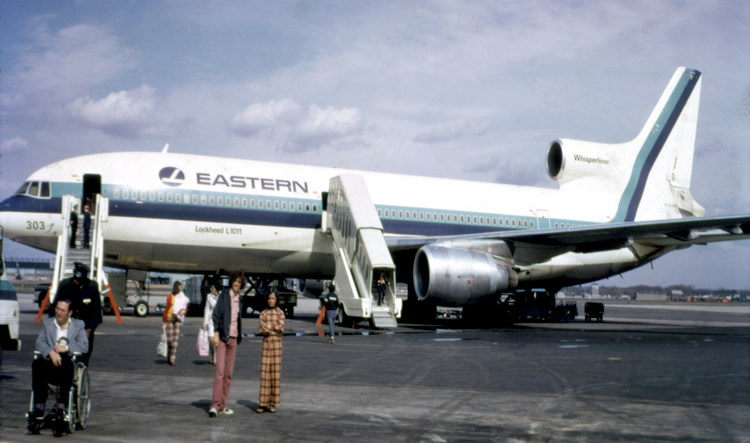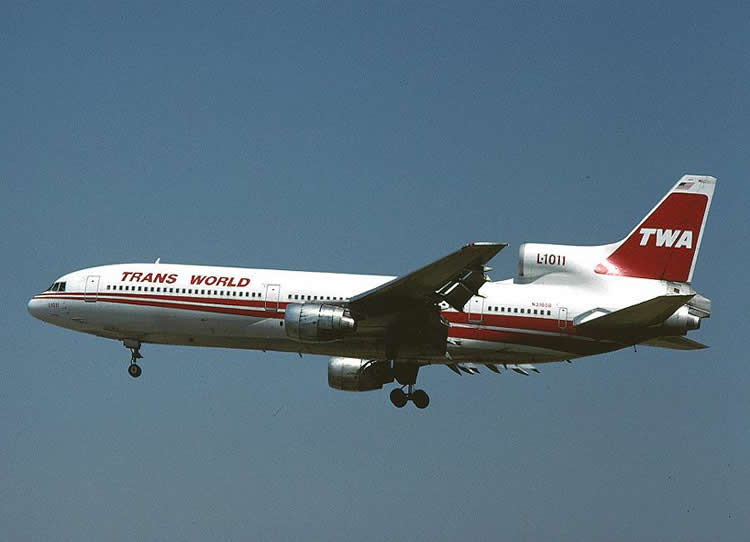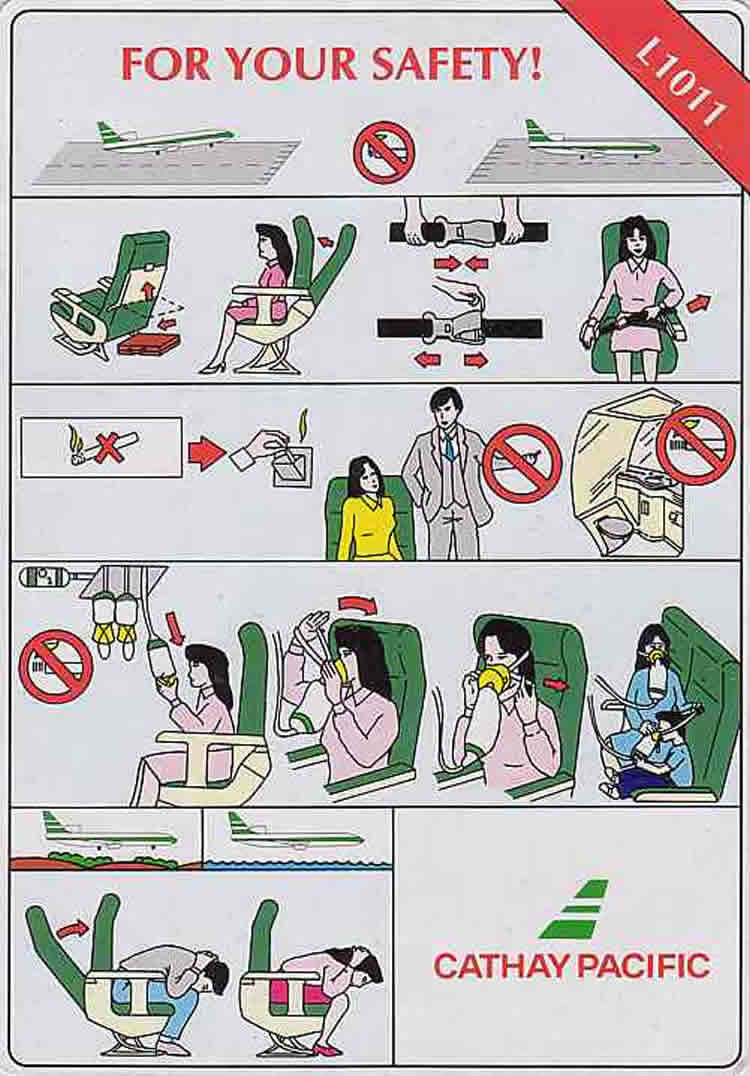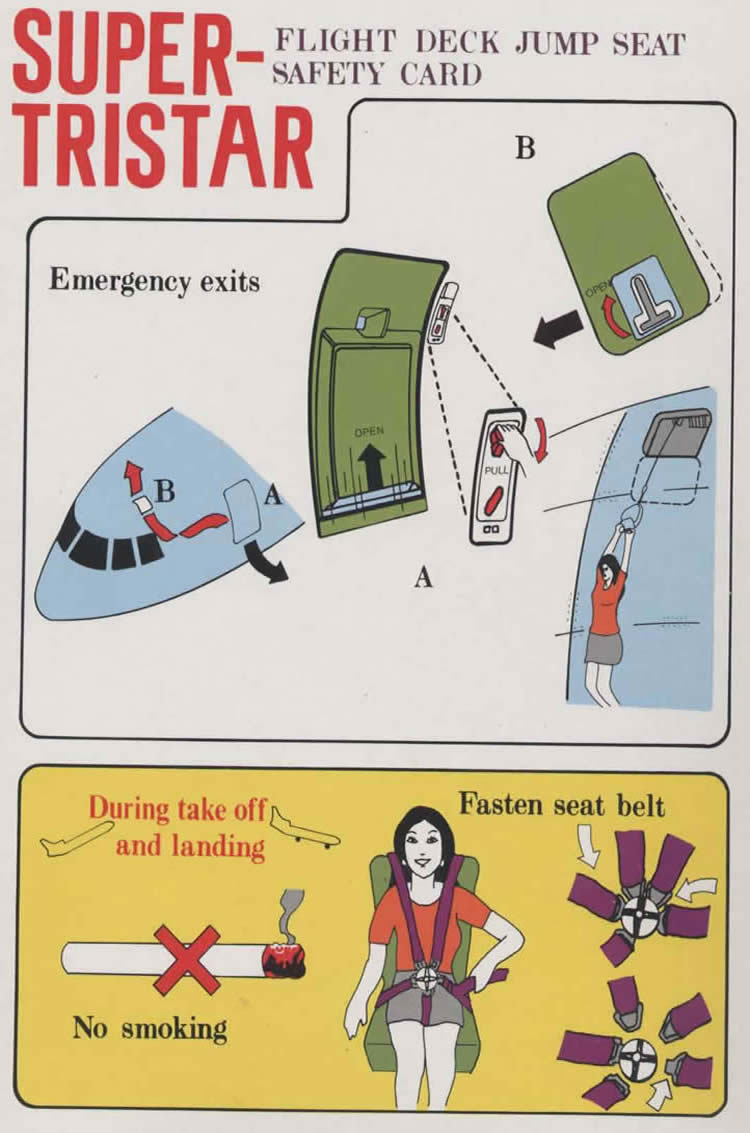LOCKHEED L-1011 (L1011) TRISTAR AIRCRAFT AIRLINER INFORMATION, SAFETY CARDS, PICTURES, HISTORY AND FACTS
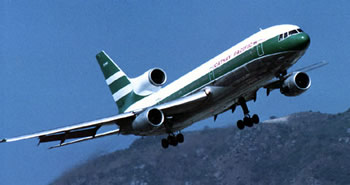 |
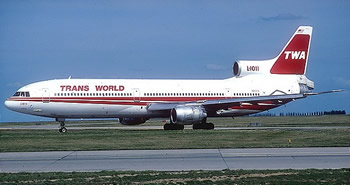 |
Lockheed L-1011 TriStar - Trimotor / Three Engine Airliner
LOCKHEED L-1011 OFFICIAL AIRLINER LOGO
The Lockheed L-1011 TriStar was the third widebody passenger jet airliner to reach the marketplace, following the Boeing 747 "jumbo jet" and the Douglas DC-10.In the 1960s, American Airlines approached Lockheed and competitor Douglas with a need for an aircraft smaller than the existing 747, but still capable of flying to distant locales such as London, the Caribbean, and Latin America from company hubs in Dallas and New York. Lockheed answered the call with the TriStar. Perhaps ironically, American never flew the "Ten Eleven," purchasing many DC-10s instead.
First flown on November 16, 1970, the twin-aisle TriStar was considered a technological marvel of its day, featuring low noise emissions, improved reliability, and efficient operation. Although the TriStar's design schedule closely followed that of its fierce competitor, the DC-10, Douglas beat Lockheed to market by a year due to delays in powerplant development. Rolls-Royce, the maker of the TriStar's RB211 turbofan engines, had filed for bankruptcy, halting L-1011 final assembly. The British government did not approve the large state subsidy used to restart Rolls-Royce operations until after the U.S. government had guaranteed the Lockheed loans previously provided to Rolls for the extensive engine contract. The first TriStar was finally delivered to Eastern Airlines on April 26, 1972.
Lockheed L-1011 TriStar
Designed for a maximum seating of 400 passengers, the TriStar utilized a new engine layout: in addition to Rolls-Royce turbofan jet engines on each wing, a third engine was located dorsally below the vertical stabilizer . Manufactured in Lockheed facilities in Palmdale, California, the TriStar faced brisk competition with the Boeing 747 and, even more directly, the Douglas (later McDonnell Douglas ) DC-10, which it closely resembled. The TriStar had a better safety record than the DC-10, and Trans World Airlines heralded the TriStar as one of the safest airplanes in the world in some of its promotional literature in the 1980s when concern over the safety record of the DC-10, which was flown by most of its competitors, was at its peak. However, the DC-10 outsold the TriStar nearly two to one, partly because of the TriStar's delayed introduction.
Nevertheless, a number of airlines flew the TriStar, including Aer Lingus , Air Atlanta Icelandic , Air Canada , Air Lanka , All Nippon Airways , Arrow Air , British Airways , BWIA , Cathay Pacific , Court Line , Delta Air Lines , Eastern Airlines , Fine Air , Gulf Air , Hawaiian Airlines , Iberia Airlines , LTU , National Airlines , Pan Am , Peach Air , PSA , TAP Air Portugal Trans World Airlines , United Airlines (acquired in the Pan Am buyout), Royal Jordanian and Saudi Arabian Airlines. The aircraft's largest operator, Delta Air Lines, retired its TriStar fleet in 2001, replacing them with the Boeing 767-400ER. TWA withdrew its last TriStar from service in 1997. Lockheed bribed the Japanese government to subsidize ANA's purchase of L-1011's, and the resulting political scandal led to the arrest of Prime Minister Tanaka Kakuei. A longer-range variant of the standard-length L-1011 was developed in the late 1970s. Designated the L-1011-500, the fuselage length was shortened by 14 feet to accommodate higher fuel loads.
Lockheed manufactured a total of 250 TriStars, ceasing production in 1984 . Lockheed needed to sell 500 planes to break even. Failing to achieve profitability in the civilian airliner sector, the TriStar was to be Lockheed's last commercial aircraft. Airlines played Douglas and Lockheed off each other, driving the prices of both planes down, and the end result was Douglas' merger with McDonnell and Lockheed's departure from the commercial aircraft business. The aging L-1011 was still in use by some airlines at the start of the 21st century, and in the late 1990s, NASA performed aerodynamic research on modified L-1011s.
Commercial Delta Air Lines was the type's largest customer. Cathay Pacific eventually became the largest non-U.S. operator of the type by acquiring many of the Eastern Air Lines examples when Eastern Air Lines went bankrupt, operating as many as 21 aircraft. In an effort to secure the Japanese market, Lockheed had secretly bribed several members of the Japanese government to subsidize ANA's purchase of L-1011s; however this caused a significant scandal when the bribes were uncovered. The discovered scale to what has become known as the Lockheed bribery scandal led to the arrest of Japanese Prime Minister Kakuei Tanaka as well as several other officials. Within Lockheed, board chairman Daniel Haughton and vice chairman and president Carl Kotchian resigned from their posts on 13 February 1976. Tanaka was eventually tried and found guilty of violating foreign exchange control laws, but was not charged with bribery, a more serious criminal offense. Crucially for Lockheed, the fallout from the scandal included the loss of a contract worth in excess of $1-billion. The Soviet Union at that time lacked a wide-body airliner. Development of their own Ilyushin Il-86 was delayed, so in mid 1970s the Soviets started negotiations to buy 30 TriStars and licence-produce up to 100 a year.The talks collapsed as US President Jimmy Carter made human rights a US policy factor. The TriStar was also listed by the Coordinating Committee as embodying advanced technology banned from potential enemies, thus being a serious obstacle to the export deal.
Lockheed needed to sell 500 planes to break even, but in 1981 announced production would end with delivery of the 250th and last plane on order in 1984. The TriStar's failure to achieve profitability caused Lockheed to withdraw from the civil aircraft business. Most major airlines have retired the type altogether. Cathay Pacific retired its L-1011 aircraft in October 1996, replacing the fleet with Airbus A330-300. TWA withdrew its last TriStar from service in 1997; Delta Airlines retired its TriStars in 2001 to replace them with the Boeing 767-400ER. The L-1011 still sees use by smaller start-up carriers, particularly in Africa and Asia. These operators mainly do their business in the ad hoc charter and wet leasing businesses. ATA Airlines (formerly known as American Trans Air) fleet included over 19 Tristars, but operations dwindled to only three L1011-500s prior to the company's shut-down in April 2008.
In the early 1990s, Orbital Sciences began to use a converted L-1011-100 named Stargazer to launch Pegasus rockets into orbit around Earth. This venture effectively rendered the small Scout rocket obsolete. This aircraft was also used in support of the X-34 and X-43 programs. NASA performed aerodynamic research on Orbital Science's L-1011 in 1995.
Military The TriStar has also been used as a military tanker and passenger/cargo aircraft. The Royal Air Force has nine aircraft of four variants. The aircraft are ex-British Airways and Pan Am L-1011-500s. All of the aircraft serve with No. 216 Squadron, and are based at RAF Brize Norton. The TriStar will remain in service with the RAF until early in the next decade, when it is scheduled to be replaced by the Airbus A330 MRTT under the Future Strategic Tanker Aircraft (FSTA) program.
Variants L-1011-1 The L-1011-1 was the first production model of the L-1011, designed for short and medium-range flights. This type was purchased by Air Canada, ANA, Cathay Pacific, Eastern and other operators with regional trunk routes requiring a widebody aircraft. Pacific Southwest Airlines purchased two L-1011-1 models with lower deck seating. This variant was also the only wide-body to have the option for a full-height built-in airstair incorporated into the design. L-1011-50 The L-1011-50 was an upgraded version of the L-1011-1 with an increase in maximum takeoff weight from 430,000 pounds (195,000 kg) to either 440,000 pounds (200,000 kg) or 450,000 pounds (204,000 kg). Fuel capacity was not increased. The -50 was available only as a conversion package for the L-1011-1 and was never built new. L-1011-100 The L-1011-100 first flew in 1975 and featured a new center fuel tank that increased the aircraft's range by nearly 930 miles (1,500 km). It was purchased by several airlines with longer-range routes, such as TWA, Air Canada and BEA. L-1011-150 The L-1011-150 was a development of the L-1011-1 with maximum takeoff weight increased to 470,000 pounds (210,000 kg). It was available only as a conversion for the L-1011-1. L-1011-200 The L-1011-200 was introduced in 1976. Although otherwise similar to the -100, the -200 uses Rolls-Royce RB.211-524B engines to improve its performance in hot and high-altitude conditions. Gulf Air used -200 models to replace its earlier generation Vickers VC-10 fleet. Saudi Arabian Airlines (SAUDIA), was a launch customer for the -200 series and operated a sizeable fleet until 1998. L-1011-250 The L-1011-250 was an upgrade developed for late-model L-1011-1 aircraft and all L-1011-100 and L-1011-200 aircraft. It increased maximum takeoff weight to 510,000 pounds (230,000 kg) and fuel capacity from 23,600 US gal (89,335 l) to 31,632 US gal (119,735 l). This variant also used the upgraded RB211-524B4I engine, which could be easily upgraded on the existing RB211-524B powerplants of the L-1011-200 but required a re-engining on the L-1011-1 and L-1011-100, which used the original RB211-22B. The upgrade allowed the L-1011 to match the performance of the long-range McDonnell Douglas DC-10-30. Although it was applicable to all L-1011 models, it was only used by Delta Air Lines on six late-model L-1011-1 aircraft. L-1011-500 The L-1011-500 was a longer-range variant first flight tested in 1978. Its fuselage length was shortened by 14 feet (4.3 m) to accommodate higher fuel loads. It also utilizes the more powerful engines of the -200 series. The -500 variant was popular among international operators and formed a significant portion of the L-1011 fleet of Delta and British Airways.
|
© AviationExplorer.com - The Website For Aviation Enthusiasts |





